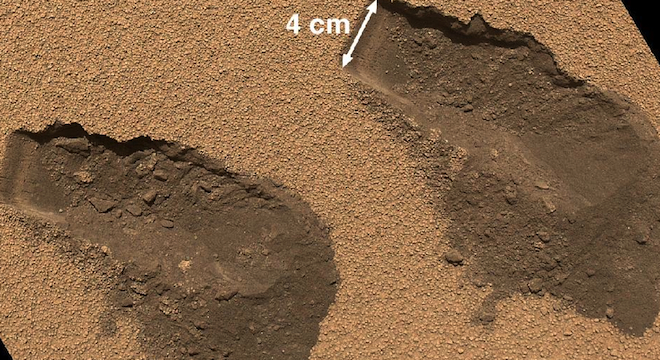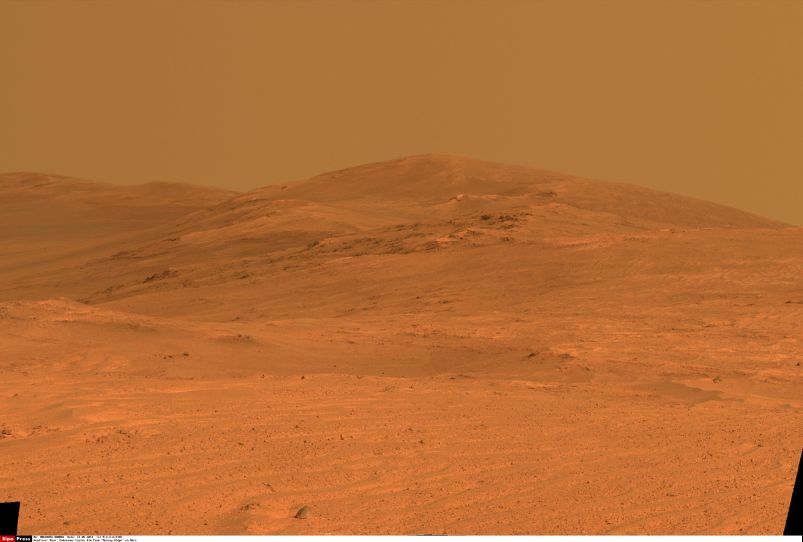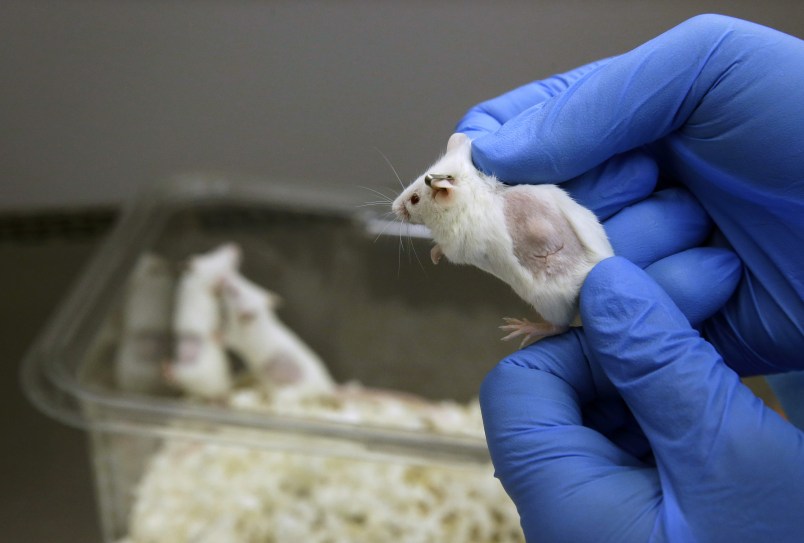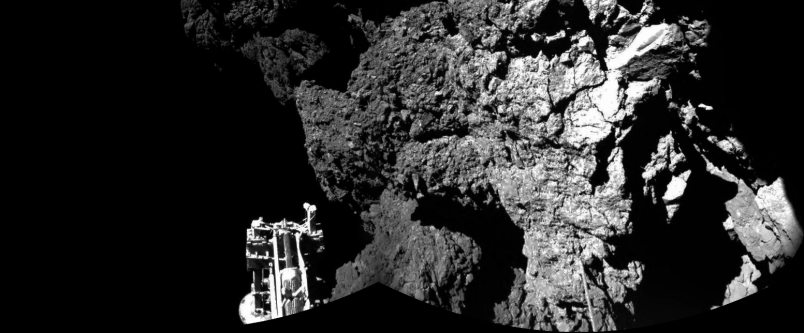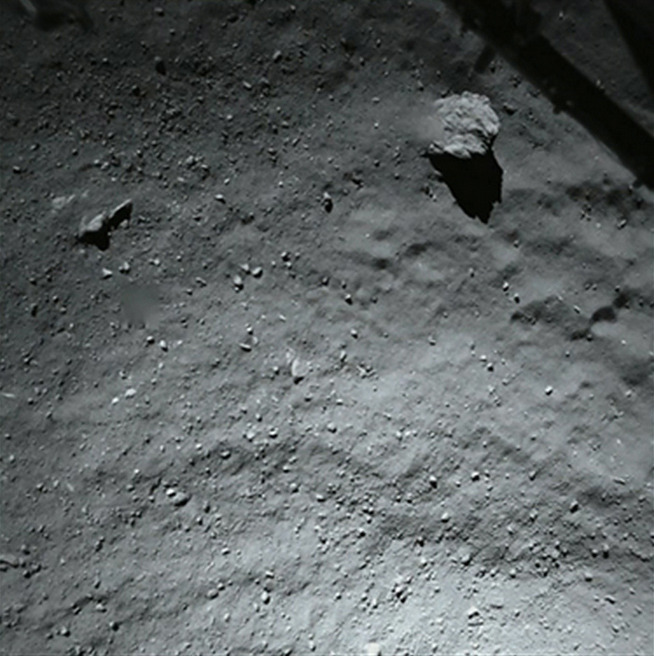NASA’s Mars Curiosity Rover on Monday announced big news from the results of its first global soil sample analysis (soil representative of the entire Red Planet): It’s found chlorinated methane compounds, molecules containing carbon, a necessary tell-tale sign and byproduct of life. The problem is, NASA still isn’t sure whether the carbon has come from Mars, outer space, or Earth itself.
The Curiosity Rover’s Sample Analysis on Mars (SAM) instrument suite, the main analysis kit aboard the rover, “has made a detection of simple organic compounds,” said Curiosity’s project scientist John Grotzinger in a NASA teleconference streamed online Monday, from the fall meeting of the American Geophysical Union (AGU) in San Francisco.
“We don’t know if they are indigenous to Mars or not,” Grotziner said, later noting it “could be material that comes from the cosmos.”
Grotzinger went on to explain that although the SAM instrument was “performing perfectly well,” the the simple organic molecules it detected may have hitched a ride from Earth to the Red Planet aboard the rover’s instruments.
“There are a number of ways we could bring that with,” Grotziner said, noting that despite NASA”s extensive decontamination procedures ahead of launch (one of which was reportedly corrupted in this case), “there’s always a little bit of stuff that comes along. Event he most sensitive materials carry this stuff.”
NASA took painstaking steps both on Earth and Mars to ensure that the rover’s SAM was as clean as it possibly could be before examining its first soil sample — scooped from an area of Mars called “Rocknest,” for the prevalence of boulders. A major component of this procedure involved scooping up several piles of Martian dust and shaking them through the SAM instrument to remove microscopic layers of Earth-derived oil from its internal surfaces.
NASA performed this cleaning procedure four times and only analyzed the fifth scoop as its first global sample. Here’s an annotated self-portrait of the rover and the scoop locations as taken by the MAHLI instrument and released by NASA on Monday. The location of the fifth scoop is only illustrated, as it had not been taken prior to the image.

“We’ve gone to great care to address potential confusion that may be caused by terrestrial contamination,” said Paul Mahaffy, the principal investigator of Curiosity’s SAM instrument set, during the teleconference on Monday.
Even if NASA does determine that the carbon came from Mars, that alone isn’t enough to confirm that Mars ever supported life. Instead, scientists must further analyze the form of carbon to find out whether or not it was abiotic, that is, the result of a non-living chemical or physical process, or whether it was biotic — the result of a biological process from a living microbe or other organism.
“A fair bit of carbon falls on to the surface of Mars,” Mahaffy explained. “The carbon in the atmosphere is heavy. Much of the stuff that falls on Earth is much lighter.”
But NASA won’t be able to tell where the carbon in this first sample came from until it does further study and collects more samples. If NASA finds more carbon, or, in the best case scenario, a carbon-rich environment, then the agency will have much more material to work with and be better able to discern its source.
“If we see an environment with lots of organics, then we’re on to something,” Mahaffy went on. “But if we just see traces, then that’s harder to draw conclusions from.”
Ultimately, the upcoming Mars Atmosphere and Volatile EvolutioN (MAVEN) mission, an orbiter designed to study the Red Planet’s climate and due to launch in late 2013, will be able to gather enough data to help scientists piece together what ancient Mars was like, whether or not it had lots of standing water around, and how Mars’ atmosphere vanished over time.
Meanwhile, the Mars Curiosity Rover will continue its methodical trek across the surface (1.6 inches per second) of the Red Planet, specifically across a 96-mile-wide ancient impact site known as Gale Crater, looking for clues to Mars’ habitability — whether or not it ever had the conditions capable of supporting life. The rover is entering the fifth month of its 23-month-long primary mission, with its ultimate goal — scaling a 3.4-mile-high nearby Martian mountain known as Mount Sharp, still ahead.





